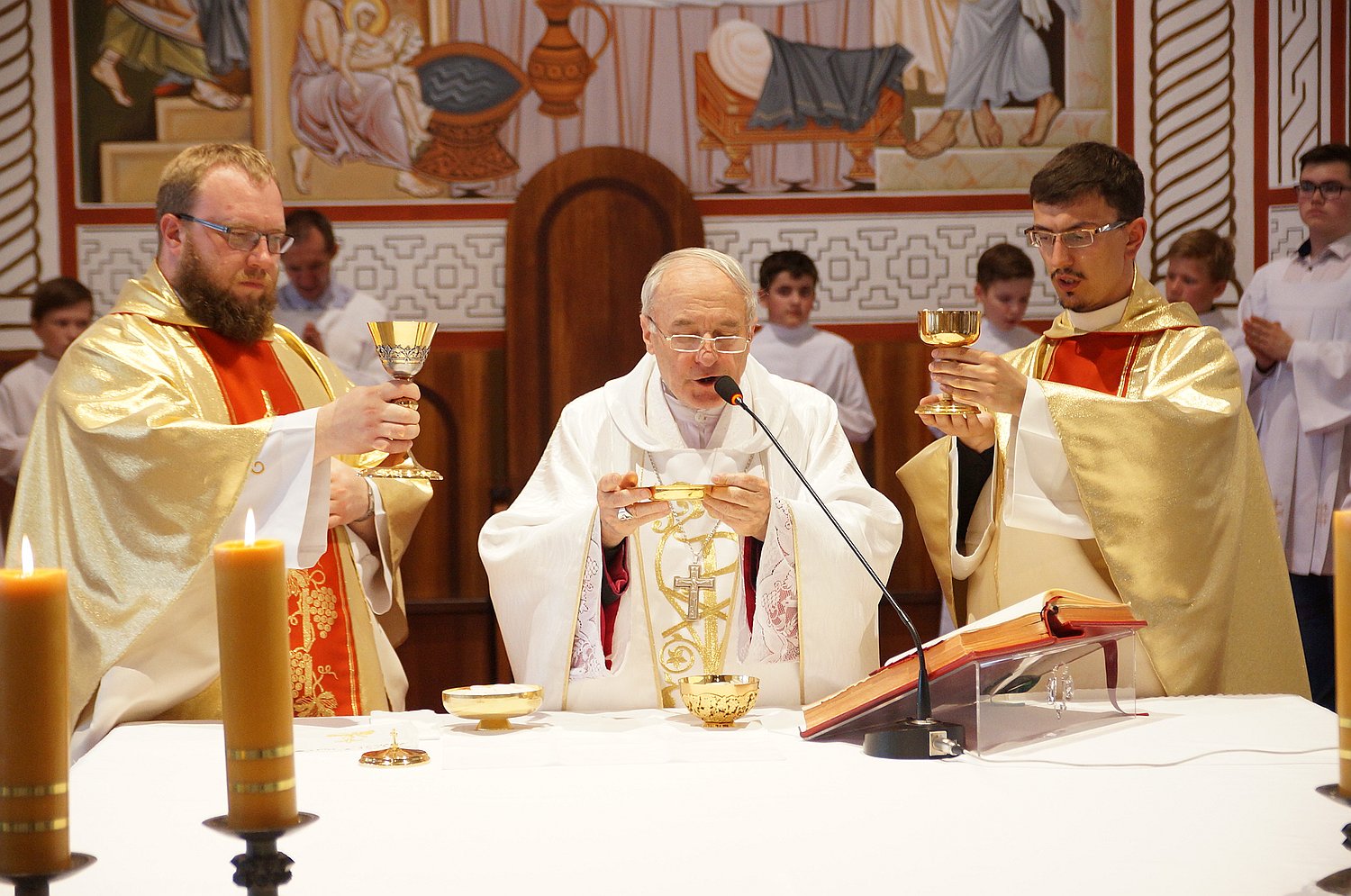Answered by Legionary of Christ Father Edward McNamara, professor of liturgy and dean of theology at the Regina Apostolorum university.
Q: When two deacons are serving a Mass, it is understood that one deacon should be the deacon for the Liturgy of the Word and the other should be the deacon for the Liturgy of the Eucharist. However, there is disagreement as to whether or not the «speaking» parts transition with the liturgy. Should each deacon have the speaking parts that relate to his assigned liturgy, or should the deacon of the Word proclaim the sign of peace and the dismissal? – C.D., Colorado Springs, Colorado
A: According to a document of the U.S. bishops’ conference, the deacon at Mass has the following principal roles:
“When there is a deacon present at the Eucharistic celebration, he should exercise his ministry wearing sacred vestments (no. 338). The deacon:
“– assists the priest and processes at his side (unless he is carrying the Book of the Gospels, in which case, he precedes the priest);
“– ministers the chalice or the Roman Missal at the altar;
“– proclaims the Gospel and, at the request of the priest celebrant, may preach the homily (no. 55);
“– gives timely directions to the faithful and announces the intentions in the Universal Prayer;
“– assists the priest celebrant in distributing Communion, especially as minister of the Precious Blood, and cleanses and arranges the sacred vessels;
“– as needed, performs the offices of other ministers when none of them are present (no. 171).”
Neither these nor other general norms go into detail regarding the division of roles of two deacons although this possibility exists in the Ceremonial of Bishops and is quite common on special solemn occasions or for concelebrated Masses.
The Ceremonial of Bishops, No. 122, on occasion of the diocesan bishop’s «Stational Mass,» gives preference to at least three deacons: «one to proclaim the gospel reading and minister at the altar, two to assist the bishop. If there are more than three deacons present, they should divide the ministries accordingly, and at least one of them should be charged with assisting the active participation of the faithful.»
For this reason, the norms on this point are not absolute and allow for a certain degree of flexibility in order to adapt to special circumstances. At the same time, there are some aspects of liturgical decorum that should be respected as far as possible.
All things being equal, when there are two deacons, they are usually divided as the deacon of the Word and the deacon of the Eucharist. It must be pointed out, however, that this terminology, although common, is not official and is generally absent from the liturgical books.
Apart from proclaiming the Gospel and the general intercessions, the deacon of the Word makes the invitation to the sign of peace and other interventions such as «The Mass is ended ….» The deacon of the Word takes his place to the celebrant’s left during the Liturgy of the Eucharist; alternatively, he may incense the Blessed Sacrament during the Eucharistic Prayer.
The deacon of the Eucharist attends to all that has to do with the altar and recites the private prayers used for the preparation of the chalice. He stands to the celebrant’s right during the Eucharistic Prayer. He may place or remove the chalice pall as needed and holds the chalice aloft during the final doxology. If necessary, he can also assist in the fraction rite. If the deacon of the Word is incensing the Blessed Sacrament, then he may also assist with the missal.
Both deacons stand slightly behind the priest when he is at the altar. Concelebrating priests should be careful so as not to obstruct the actions of the deacon.
This is the usual division of roles in papal and other solemn liturgies. However, as mentioned, these customs are not cast in bronze, and they do not respond to precise norms. I believe that the division has been left fairly open so as to be able to adapt to changing circumstances.
Thus, on occasion, some mixing may take place; for example, if the deacon of the Gospel is bereft of musical talent, the other deacon could substitute him in singing the invitation to the sign of peace or the dismissal. Likewise, the deacon closest to the microphone on the altar could proclaim the invitation to the sign of peace rather than make complicated movements.
A deacon who is to preach should usually take the role of the deacon of the Word so as to carry out both functions with ease and without interruptions.
There may occasionally be good reasons for a change in minister. For example, if the Gospel is to be sung, then the deacon better qualified for this task may proclaim the sacred text, even though another will preach.
* * *
Readers may send questions to zenit.liturgy@gmail.com. Please put the word «Liturgy» in the subject field. The text should include your initials, your city, and your state, province or country. Father McNamara can only answer a small selection of the great number of questions that arrive.



